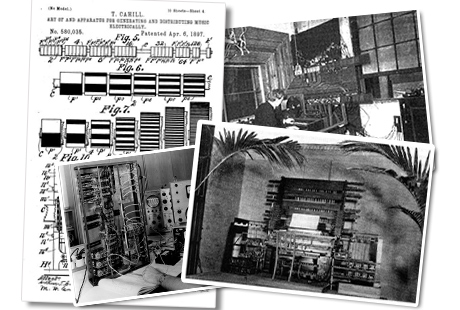A culture historical inventory of analogue electronic and digital musical instruments will form the basis for both a documentation and exhibition concept as well as for the design and development process. Here, important instruments pertaining to their performative presentation of music in terms of an particular interaction model, their technological design, and their artistic and conceptual context are identified, systematized and documented. The categorization will be created on the basis of a broadly accepted model for hybrid instruments and their nomenclature (Wanderley and Miranda, 2006) and will focus especially on the aspect of interface (sensors), mapping (complexity of the algorithmic parameter control) and sound synthesis.
Hence, the results of this systematization will provide a comparative analysis and evaluation of electronic musical instruments not only in a general sense of human computer interfaces, but also as a consideration of compositional and artistic aspects. This will serve as a basis for all further steps. Based on this classification, a standardized approach will be compiled as a set of Best Practice Guidelines for the documentation and conservation of the instruments to be developed. To be able to realize works for new musical instruments again in the future, the independence of the current technological conditions (hardware and software) has to be ensured. Paradigmatically, the source code for the entire system of the musical instruments developed as part of this project will be published. On this basis, a musical instrument is supposed to be reproducible on a long term.

